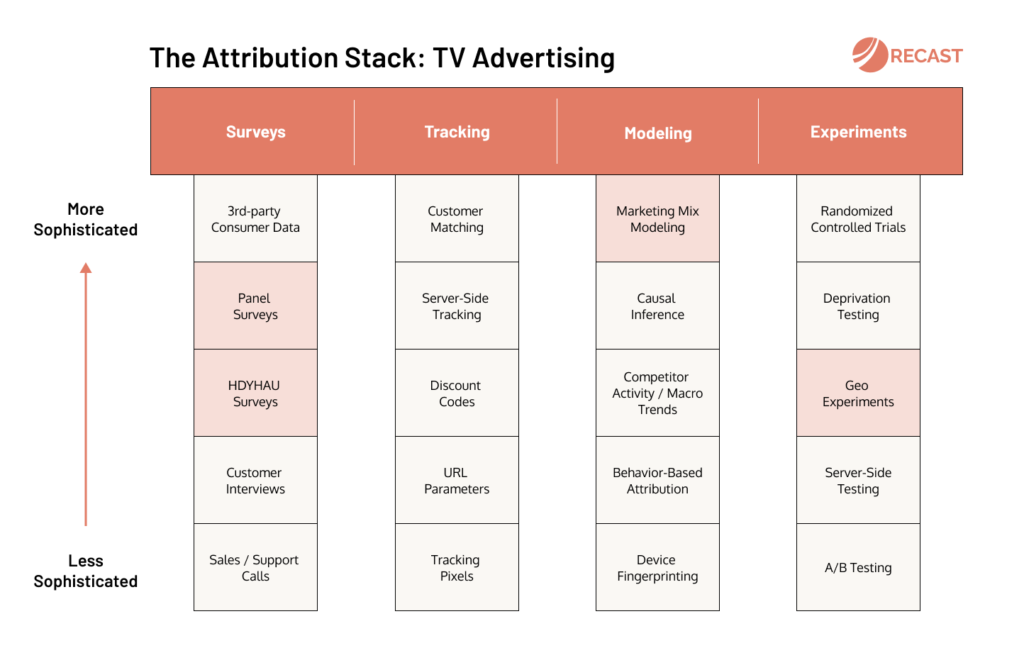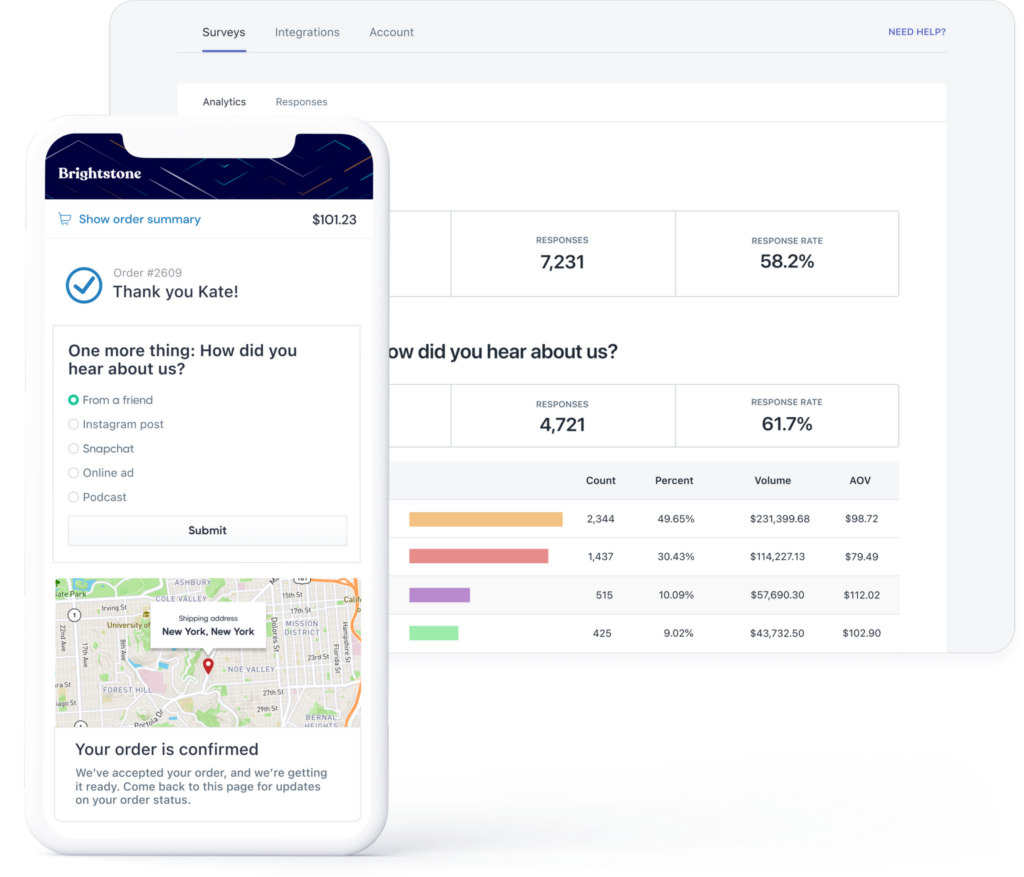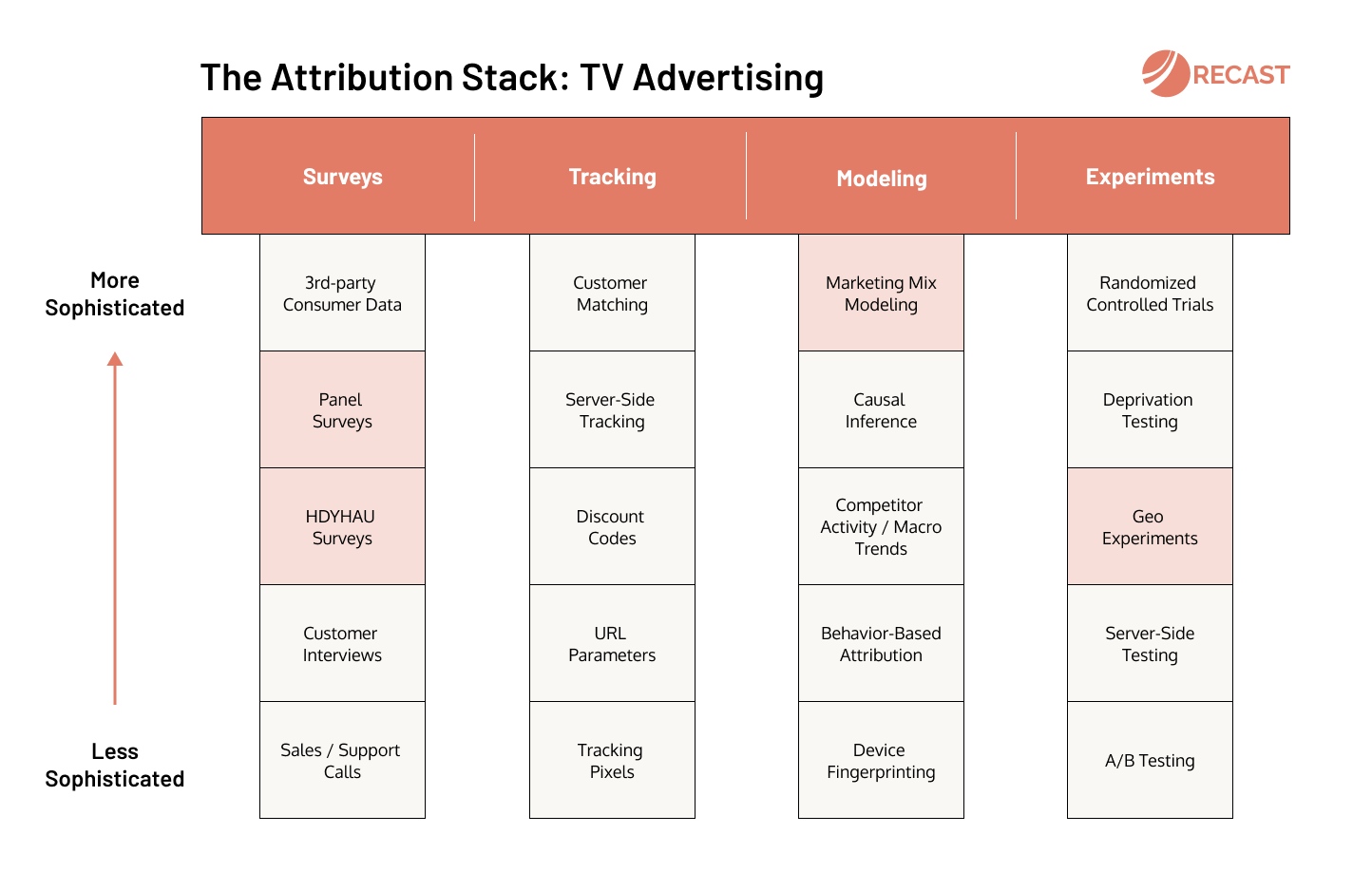TV advertising is the process of promoting a product or service on television, across broadcast, cable, or satellite. This can be done through a variety of methods, including traditional commercials (i.e. the SuperBowl), infomercials, product placement, and sponsorship.
Advertising on TV is an important part of the marketing mix, because it is a very effective way to reach a large audience. According to a Nielsen report, the average American watches more than 4 hours of TV per day. TV is also a very visual and emotive medium: it can grab people’s attention and hold it more effectively than other forms of advertising such as radio or print. US spending on linear TV ads in 2022 was $68.35 billion, up 4% from $65.66 billion in 2021.
Measurement of TV advertising is a challenge, given there’s no way to “click” on a TV ad, nor measure who watched it before making a purchase. Instead marketers must rely on less granular survey or experiment-based methods, which can be difficult to set up and run effectively. However as TV advertising usually requires a relatively large investment up front compared to other channels, usually the business case can be made for better measurement.

1. HDYHAU Surveys
One of the easiest ways to measure the effectiveness of TV, is simply to ask your customers: “How Did You Hear About Us?”. So called “HDYHAU” surveys are usually placed at the end of a checkout or signup process, so as to not get in the way of the conversion path. This method biases towards more memorable channels, and doesn’t require any sophisticated tracking technology. That makes it perfect for TV, where there are no clicks to track! Be careful that you’re not relying entirely on survey data however: customers’ memories aren’t always reliable.

2. Geo Experiments
The premise is simple: simply switch on TV advertising in some geographic regions and not others, then measure the difference. Simple in theory, but not always in practice: these methods are easy to get wrong, as we’ve written about before. Unfortunately this method can’t give much granularity, but that’s just a limitation of not being able to track exactly who watched your TV ads necessitates broader attribution techniques like geo testing. Accuracy can be improved by using more sophisticated modeling techniques, for example combining it with causal inference.

3. Panel Surveys
TV and brand advertising go hand in hand together, because it is particularly well suited as a method for reaching your entire target audience. No other channel can deliver quite as much reach. For brands spending a lot on brand awareness, it often makes sense to survey a panel of consumers over time to track brand awareness and consideration. If your brand advertising is working, you’ll record a growing share of people who have heard of your brand over time.

4. Marketing Mix Modeling
Incorporating TV into your Marketing Mix Model is of utmost importance: it’s usually one of your largest drivers of short, medium, and long term revenue! Once you have modeled TV correctly, you’ll be able to identify how TV performs in the short, medium, and long term, as well as how it interacts with other channels in your marketing mix.
One practical consideration is the data you can use. Typically TV campaigns report metrics such as GRPs, TVRs, or OTS, which are unique to the medium. At Recast we prefer to model spend, because as with all channels, what matters is how much money you made for each incremental dollar spent.
The long term or lagged effect of TV, called ‘adstocks’ in econometrics lingo, is key to modeling this channel correctly. TV has an outsized impact on medium and long term performance relative to other channels, so the correct adstock parameters must be found to account for the true incremental value.
Finally it is important to account for the halo effect TV has on your other channels, the interaction effects. For example TV campaigns tend to increase clickthrough rates on digital channels, and drive additional searches for your brand term.

How To Measure Anything
Don’t let the difficulties of measuring TV advertising, or any other channel, limit your marketing strategy. Finding creative ways to measure the impact of hard to measure channels can give you an unfair advantage against the competition. If you can advertise places your competitors can’t, you can enjoy much cheaper advertising costs, and more effective marketing campaigns.
This post is part of the “How to Measure Anything” series, which covers which attribution methods from “The Attribution Stack” are best for measuring the incrementality of each major marketing channel. At Recast we’re trying to rid the World of wasted ad spend, and if you could use a hand measuring marketing effectiveness, we’d love to hear from you.



